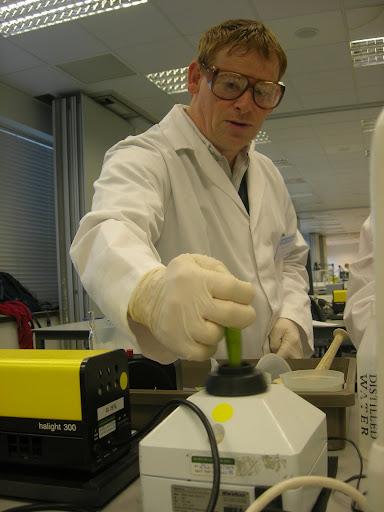On to the most complex of the topics - Vision.
To begin with it starts with an examination of light. What light is and how it is composed, and then how the eye interprets if. Looking at the science of colour and intensity. Colour is very much a product of how our eye perceives it, and we all see it slightly differently.
The continues by looking at the eye itself, the structure and function of the bits. All the bits that bring the image into focus, including some rather detailed physics of how the cornea is transparent despite being made of proteins. Also something about visual defects such as short and long sightedness, then onto the retina, colour vision movement and adaptation. There is a lot of processing done in the retina itself, to aid things like edge detection, colour constancy and other things - its a big topic.
After that we follow the signals from the retina to the visual cortex, taking in such structures as the optical chiasma, the lateral geniculate nucleus and ending up at the visual cortex.
Then its a case of looking (NPI) at visual processing, how we recognise shapes, scenes and people, including a whole chapter on recognition of writing. Lots of theories and experiments, but still it seems little in the way of solidly understood detail.
skip to main |
skip to sidebar

Life studying for a 2nd time around with the Open University and others.
My Latest Blip
About Me
Topics
- A251 (7)
- astronomy (1)
- CMA (4)
- coursera (8)
- courses (40)
- degree (1)
- ECA (2)
- exam (7)
- experiment (3)
- G+C (7)
- html (1)
- intro (1)
- java (1)
- quantum mechanics (1)
- residential (43)
- S103 (19)
- S170 (1)
- S171 (1)
- S193 (1)
- S194 (4)
- S196 (1)
- S204 (21)
- s205 (18)
- S282 (17)
- s283 (8)
- S320 (12)
- S366 (11)
- S377 (10)
- SD329 (9)
- sk195 (2)
- sxr103 (3)
- SXR208 (9)
- sxr270 (7)
- sxr270tutor (7)
- SXR375 (9)
- SXR376 (8)
- TMA (49)
- tutorial (4)
- udemy (3)




No comments:
Post a Comment